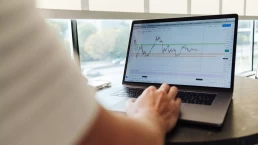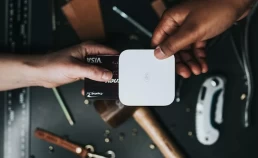Now that you have set up your website and its payment system, it is time for the two most important aspects of your online business: finding a product to sell and suppliers to source it from.
It is easy to become complacent when you are plying your trade on the Internet.
The Internet is so vast with almost a billion websites operating every day. Surely it would be a cinch to find products to sell and suppliers to work with. I will answer “Yes” to both questions, but there is a catch.
Read on and find out what the catch is!
Table of Contents
ToggleWhat is Product Sourcing
Simply put, Product Sourcing is the process of finding products to sell for your business. In this case, it’s for your online business.
When you source for products, your objective is to find suppliers or sellers who can quote pricing that will enable you to realize a profit. It means your primary purpose is to look for Wholesalers.
For those of you who have had experience selling, you are probably asking yourself, “Why wholesalers? Why not go directly to the manufacturer?” That is a frequently asked question and a good one.
Manufacturers have their purpose and function. Manufacturers produce a large volume of products, but they do not have the networks to access potential markets. This is where the wholesalers come in. Manufacturers will not deal with retailers directly because they don’t have the time to spend with individual buyers.
In the product sourcing chain, the sale of goods trickles down from manufacturer to wholesaler to retailer. As the proprietor of an online business, you are the retailer.
Local Sourcing Methods
If you think about it, any business involves selling. Whether it is a physical good or an intangible service, your business needs a product or service to sell to generate revenue.
For those of you who have had experience selling, you probably utilized local sourcing methods. These cover sellers or suppliers who are within your geographic area. Usually, you start sourcing local suppliers within a small radius; perhaps 5 kilometers from your place of business. Then as your business scales up, the radius begins to expand as well.
Here are a few examples of popular local sourcing methods:
- Garage, yard sale.
- Local Merchants.
- Local Artisans.
- Storage Unit Auctions.
Avoid Scammers and Middlemen
As entrepreneurs, it is normal to look for ways to cut costs or streamline the production process to improve profit margins. For start-ups, the need to cost-cut begins at the pre-operating stages where product sourcing begins.
98% of all new businesses registered globally every day are start-ups or small businesses. This statistical fact is known not only by small business agencies but by those whose interests are solely capitalizing and taking advantage of the entrepreneur’s fear of failure.
These are the individuals and companies that insert themselves into the product-sourcing chain through deception. Their goal is to profit at your expense. These are the middlemen and the scammers.
Based on what we have already discussed, let us arrive at a working definition of Product Sourcing. It is the process of sourcing wholesalers with products that you can sell for your online business and realize a profit. To drive home the point of why you need to deal only with wholesalers, let us expand its description from wholesalers to “Factory Accredited Wholesalers”.
These are the wholesalers that have been authorized by the manufacturer to sell their products. When manufacturers select wholesalers, a contract is drawn between both parties to ensure proper accountability and that the supply chain is held intact. Most manufacturers of products have a list of authorized or accredited wholesalers. The list can be viewed on their website, or you can e-mail them a request.
However, before you can enter into a supply contract with an accredited wholesaler, you have to go through a qualifying process. The first step is usually providing a complete set of your business registration documents.
There are quite some online business owners who do not want to go through a qualifying process. Perhaps, theirs has not been registered as an official business. Or they just don’t want the hassle. So they search the Internet and look for other sources of suppliers with products to sell online. At this point, you have officially tread upon the Spider’s Web.
Countless middlemen and scammers on the World Wide Web are keenly attuned to any indication their modus operandi has caught someone’s attention.
You come across their websites every day promising among other things:
- No documentation is required!
- No shipping charges!
- No handling of products!
- No sign-up fees!
- No questions asked!
- Thousands of high-quality merchandise to sell on your website!
- Millions of satisfied customers!
Some will even go the extra mile by adding testimonies from satisfied customers who are referred to only by initials or their first name. Worse are those who would state, “As seen on (add the name of the website).”
From experience, hard-selling tactics are a potential red flag. As the old saying goes, “If something is too good to be true, it probably is.”
Sometimes it is a good idea to embrace paranoia when product sourcing because it strengthens focus and keeps you on your toes. Those testimonies could be pure fabrication. The posted pictures could have been stolen from some unsuspecting person’s social media account. The same goes for the website. These websites could be owned by the middleman or the scammer to enhance their reputation.
If you sign up with these unaccredited middlemen or scammers, you have unwittingly inserted them into the product-sourcing supply chain. Whereas before it was:
Manufacturer > Wholesaler > Retailer (You)
Now it would be: Manufacturer > Wholesaler > Middleman/Scammer > Retailer (You)
With the middleman, you are now paying more for the manufacturer’s product because the middleman has passed on his cost to you. Your prices have become more expensive compared to those in your industry who followed protocol and signed a supply contract with an accredited wholesaler.
In a price-driven market such as the Internet, you cannot afford to be more expensive than your competition. That is a sure way to get overlooked by your market. If you attempt to match their prices, you will have to reduce your margins, and this will affect the profitability of your online business.
Final note: why have I distinguished between the middleman and the scammer? This is because a middleman could be a legitimate business person who was appointed by the retailer to expand its network. Scammers, on the other hand, are unscrupulous.
Like a predator, they are always on the hunt for anyone who is bleeding financially. They will sell the idea of financial freedom to you: untold riches without effort. Once you have bitten hook line and sinker, they will bleed you dry without remorse.
The bottom line: Always source for an accredited wholesaler when product sourcing and go through the correct procedures even if these are tedious. It also won’t hurt to do due diligence work on your own with the accredited wholesaler. Business is hard work but rewarding when done right.
The Process of Product Sourcing
Now that we’ve established why you should only source for accredited wholesalers let’s shift our attention to the process of product sourcing. Specifically, how do I land an arrangement with an authorized wholesaler? This only requires four steps:
Step #1: Define your business identity. Yes, you have to firm up who your business is. Remember that the definition of a business is that it is a living, breathing entity. Thus, it must have a personality and legal representation to enter legitimate business arrangements.
Step #2: Secure a Tax Identification Number. In the Philippines, this is pretty much routine when setting up a business. When you’re dealing with international suppliers, they will ask for your Tax ID. Wholesalers use this to comply with the requirements of their tax collection agency.
Step #3: Open your Business Bank Account. It goes without saying that if you have a business, it must have a savings account. I would suggest that even if your supply chain is international, to open a Philippine Peso corporate account. This makes it easier to receive funds from merchant accounts that do not allow direct-to-dollar account deposits and to fund local business expenses.
Step #4: Open your Merchant Account. We discussed this process in the previous chapter. Without the Merchant Account, your customers will not be able to pay you via credit card.
Types of Product Sourcing
When you source products through accredited wholesalers, you are assured of selling products that are brand new and covered by a warranty.
Accredited Wholesalers also have client support services built into their system. Some wholesalers will appoint an Account Officer for your company and work to ensure your business needs are well attended to. Among the issues an Account Officer will oversee are:
- Shipping issues
- Damaged merchandise
- Requests for return or replacement
- Liability issues
- Request for product images or descriptions
So now that you are well acquainted with product sourcing and how it benefits your online business, you should understand that there are different types of product sourcing, and these are not the same.
a. Light Bulk Wholesaling. This type of wholesaler will sell you small amounts of merchandise at the wholesaler’s price. The volume of purchases from a Light Bulk Wholesaler is manageable and you can store these in your house. You will be responsible for shipping the merchandise to those who order at your website.
Light Bulk Wholesaling is ideal for eBay sellers because if you place larger volumes, the wholesaler can give you additional discounts in addition to the wholesale price. Since the difference between the retail price and the wholesaler’s price is your profit, your margins are bound to improve.
I would recommend this type of wholesaler to first-time online sellers.
b. Drop Shipping. This type of wholesaler will deliver the merchandise directly to your customer from their warehouse. You will still pay the wholesale price but unlike Light Bulk Wholesaling, you do not have to store the products in your home.
Margins for Drop Shipping arrangements are smaller because wholesale prices may reflect warehousing and storage costs.
c. Liquidation Buying. Liquidation means getting rid of products that are no longer needed. Liquidation implies a measure of urgency to monetize unwanted products even at the risk of earning profit.
Companies liquidate merchandise for several reasons. It could be that they are over-produced. Anticipated demand was not there for the product, or quite simply, they just were not good sellers. Regardless of the cause, the company has too much merchandise that represents excess inventory and wants to clear them out.
Supposedly, products procured through Liquidation Buying are brand new. Proof of this is that these wholesalers keep the products sealed in their original packaging material. But you still have to exercise caution.
d. Closeout Buying. This is similar to Liquidation Buying in that there is a case of over-production or excess accumulation of merchandise. The difference between Closeout Buying and Liquidation Buying is the level of urgency. For Closeout Buying, they will keep the products on sale until they are out of stock.
A good example would be wholesalers of technology devices such as PCs, laptops, smartphones, and tablets. We know technology evolves so fast that today’s latest gadget could be obsolete next quarter.
Technology is subject to Okun’s Law in that its value can be significantly lower by 1 ½ times its original value in one year.
The merchandise is also considered brand new as it is stored in its original packaging material. But you should still factor in the possibility of damage.
So which type of wholesaler is for you? The best strategy would be to consider and apply all four types of wholesalers. By incorporating all four types, you will have more options to source products from and opportunities to improve your margins.
Take note that in the case of Liquidation Buying and Closeout Buying, you are never assured of a steady supply of products. Even though you can get products here cheaper, you can luck out on their availability.
Market Research
Finding a product or service to sell. We’ve arrived at one of the last sections in this chapter, but essentially, this should be your first step in product sourcing.
According to a study by CB Insights, the number one reason why startups fail is an absence of market need for their product or service. Regardless of what you think of a product or service, it will not sell if the market does not demand it. But here’s the question: do you know who your market is?
Entrepreneurs are guilty of believing they have stumbled upon the “next big thing.” And while products such as “Doggles”, “The Snuggie” and “Billy Bob Teeth” have made its inventors wealthy beyond their wildest dreams, they could just be exceptions to the rule. These products are more novelties rather than items that consistently address a need or present an upgrade.
The first rule in becoming an entrepreneur is to do market research. Find out which products or services fill in the demand of a niche market. Then find a better solution. As a proprietor of an online business, your job is not to invent the solution but to source it.
How to Find Accredited Wholesalers
Let me start this section with one piece of advice that will drop your collective jaws. This is the “catch” I stated at the beginning of this chapter.
If you want to look for accredited wholesalers, the last place you should look is the Internet.
What?! Yes, it’s true.
The fastest way would be to get referrals from people you know who have been in the industry for a long time. But for those without connections, their first course of action would be to search for wholesalers via the Internet. And 99.9% of scammers and middlemen know this. They will capitalize on your dependence on the Internet and need for merchandise that they will hatch elaborate plans to make you willingly hand over hard-earned money.
You can type “wholesalers” or “accredited wholesalers” or even do a long-tail keyword search “accredited wholesalers of liquidation buying merchandise for worldwide shipping” and you’ll get similar results. The search results will yield a thousand links that will take you everywhere but end up nowhere.
There is no harm in testing these waters. As long as you remind yourself to remain vigilant, and objective, and manage your need for merchandise to sell, all you will risk is time.
Keep this in mind: The real wholesalers do not advertise on the Internet because they want to deal directly with the big players; the largest retailers on the planet. Advertising online will attract mostly small retailers. For the wholesalers, dealing with small retailers is not in line with PROTI or Potential Return on Time Invested.
It’s not that wholesalers do not want to deal with home-based businesses; they do. But given the comparatively small volume of orders, they will make you work harder for the privilege!
You will have to do some sleuthing and research to get the attention of these wholesalers. The failure of most online businesses is they stay on the same road that leads to nowhere. They should be looking for alternative solutions; think outside the box and be creative.
Instead of looking for the wholesaler, look for the manufacturer! After all, it is the manufacturer who produces the goods and accredits the wholesaler.
A good number of manufacturers will connect you with their network of wholesalers near your area.
Most manufacturers have websites, and some will have a web page or an internal link to their accredited wholesalers worldwide. If they don’t, it means they want you to contact them directly. You can send them an e-mail from their website or directly from the webmail address. It may take some time but the best, most reputable manufacturers always reply.
Important point: Be a true professional when you communicate with a manufacturer. A typical proposal kit includes:
- Letter of Intent on official business letterhead
- Company or Business Profile
- Cover page of SEC registration or other proof of legitimacy
I would recommend that you send an advance copy through e-mail and a hard copy via courier service. In your Letter of Intent, don’t forget to state your interest in setting up a phone meeting.
This stage of the online business process is crucial because it will determine your stream of income. You need to have a consistent flow of merchandise available for sale to keep your business moving and growing.
Finally, I want to clarify any confusion that may arise from the message of the first section of this chapter. Do not go to the manufacturers asking for products. But go to the manufacturers to inquire about their wholesalers.
Source Worldwide For Your Business
As you have seen, setting up an online website business is not a simple matter of just buying a domain name, subscribing to a hosting service, and building a website. It involves a series of activities that are distinct yet interconnected to your purpose of selling products and services online.
There is not one stage that is more important than the other. In building your online business the saying “a chain is only as strong as its weakest link” rings loud and clear.
It takes time and effort to source worldwide products for your website. In due course, you will realize it was well worth it.
Next read: How to Boost Online Sales and Marketing
Roel Manarang is a seasoned entrepreneur who helps businesses succeed through design and digital marketing. With over 10 years of experience, he has assisted 170+ global companies. Roel is the founder of Workroom, a digital marketing company, and Tycoon Philippines, an acclaimed business and finance blog. Find him on LinkedIn.





